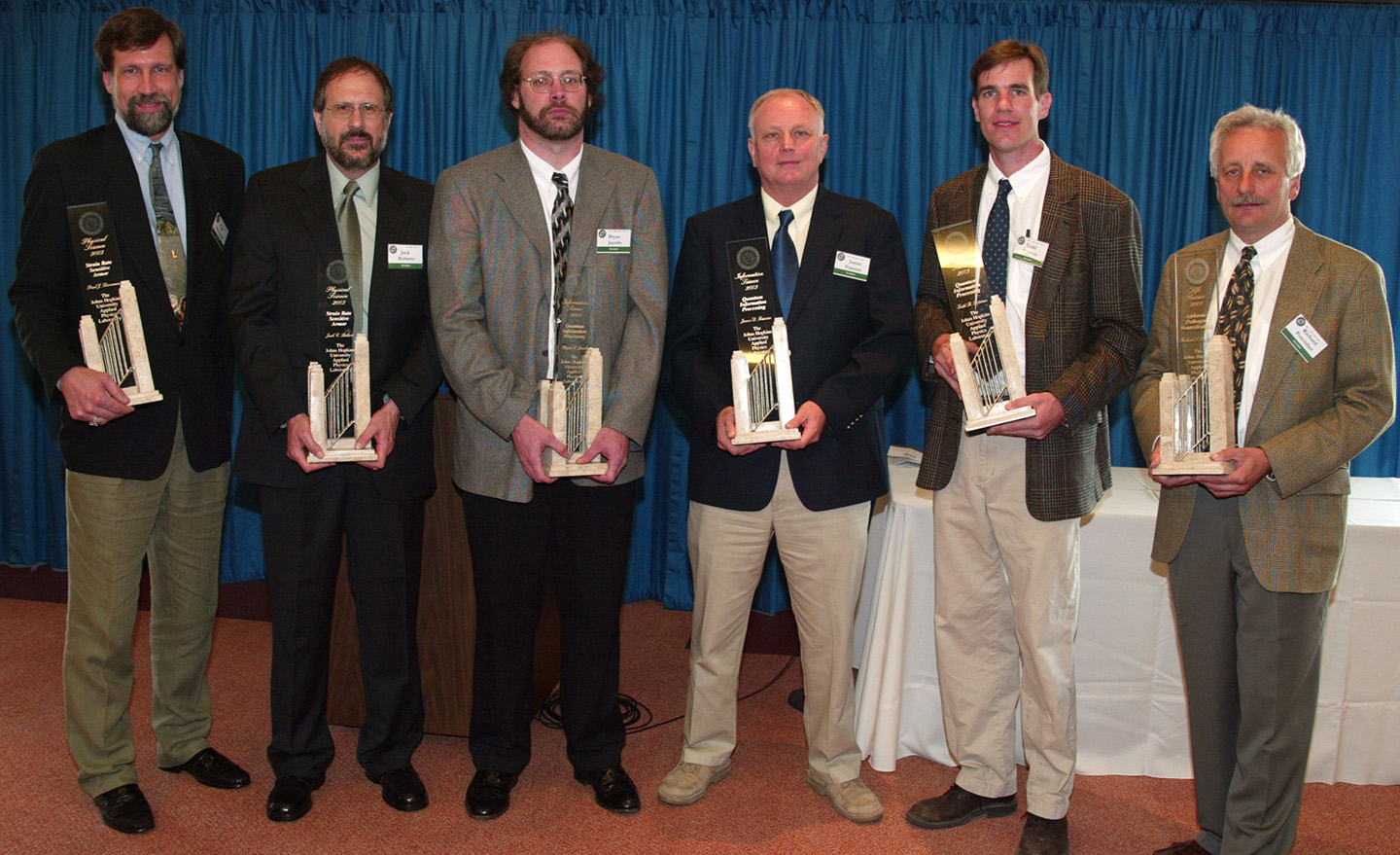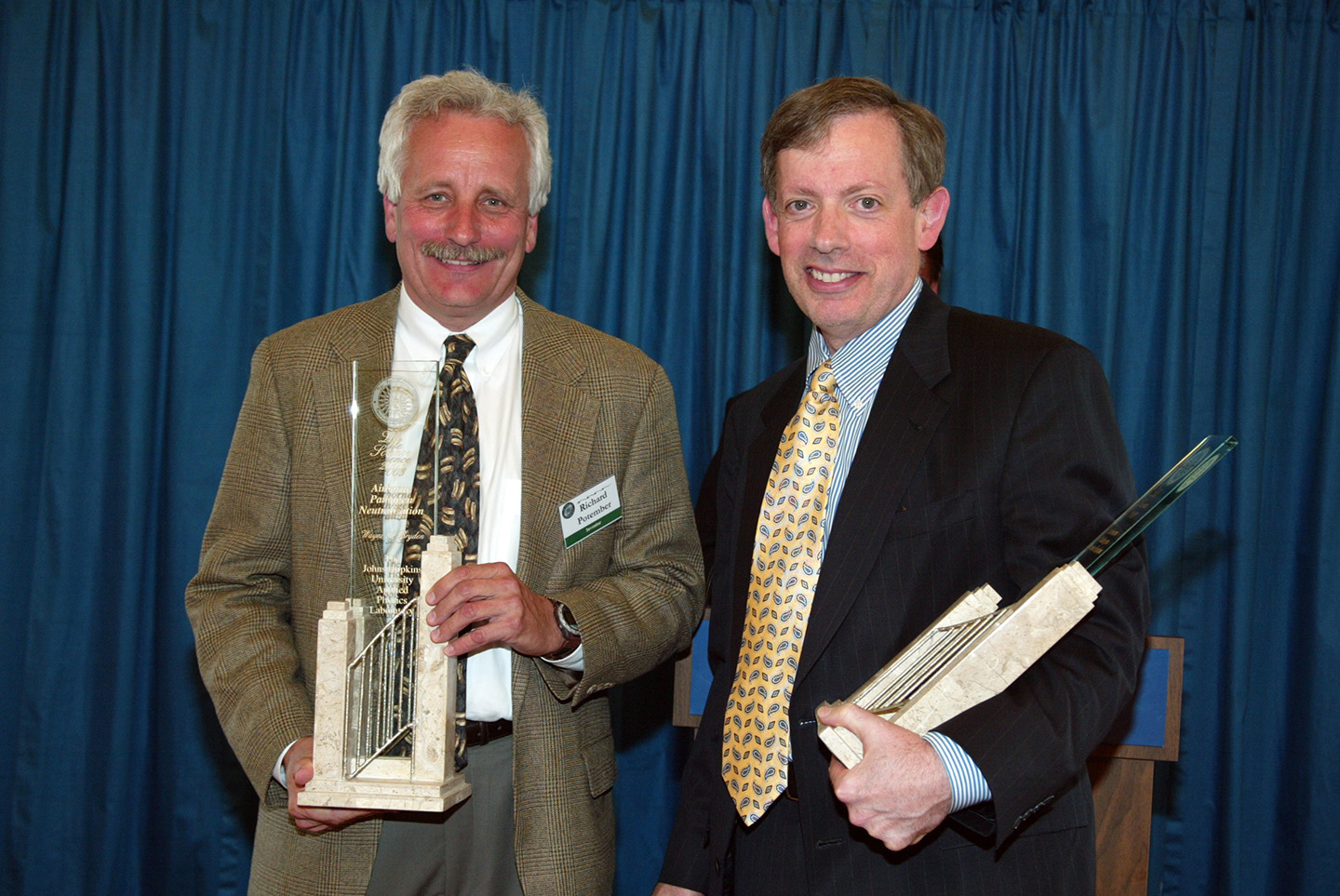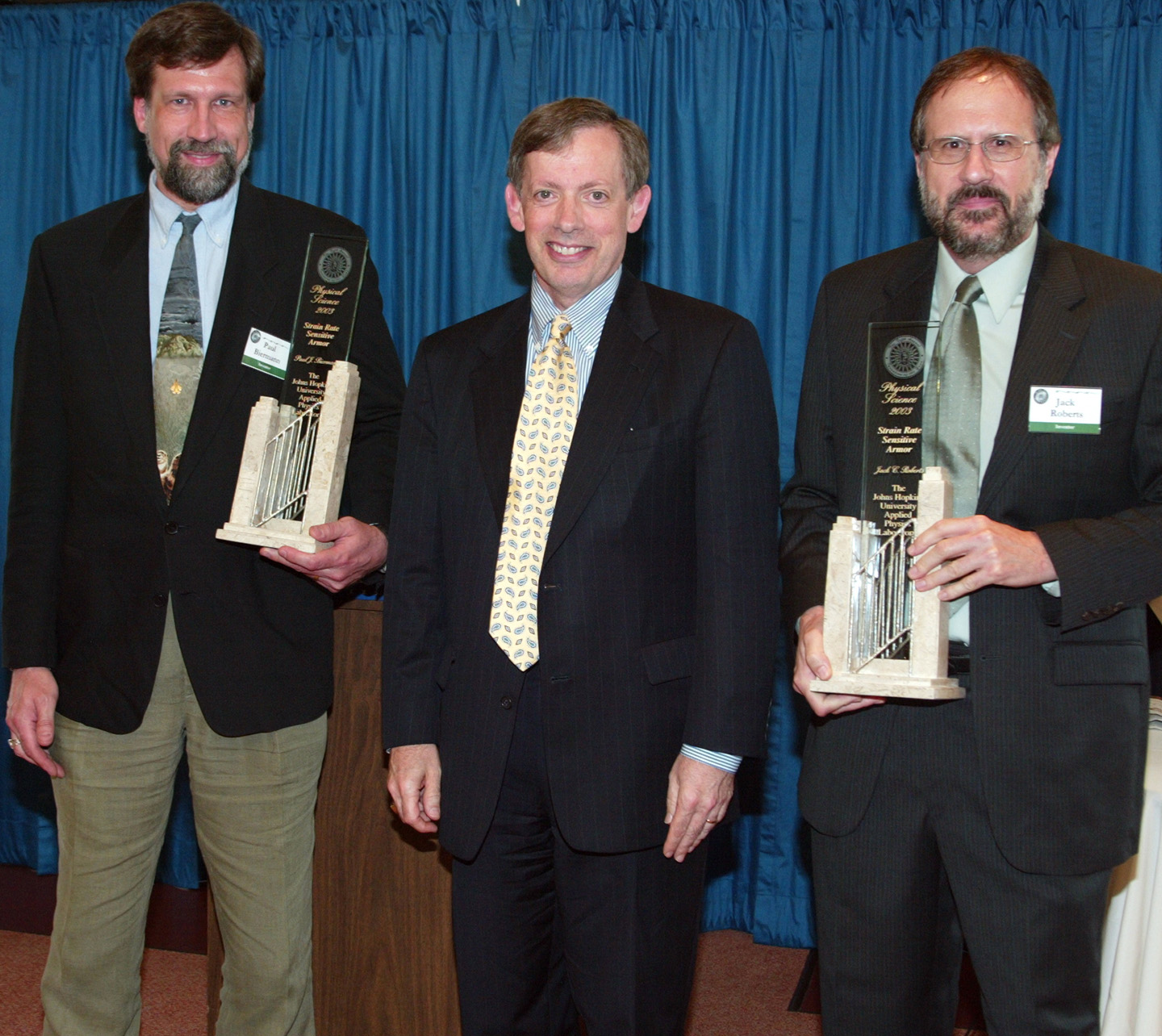Winner: Physical Science
Strain-Rate Sensitive Flexible Armor with Laminated Composite Elements
Because of the steel or ceramic plates inside, the "soft" body armor that soldiers and police officers wear is heavy, bulky and hinders movement. APL researchers Jack Roberts and Paul Biermann are teaming up with Richard Reidy of the University of North Texas to develop a soft body-armor vest that is light enough to prevent fatigue after considerable use, flexible enough to allow ease of movement, but also rigid enough to stop automatic assault rifle bullets.
The armor will combine two (or more) overlapping layers of ceramic composite inserts. The inserts are encapsulated in a "smart" polymer that holds the discs in place for flexibility and coverage as the wearer moves around, then stiffens at the moment of a ballistic impact. This "strain-rate sensitive" polymer may be reinforced by layers of traditional soft-armor fabric, such as Kevlar. The armor can be designed to fit the legs and arms in addition to the torso.
Winner: Information Science
Method for Quantum Information Processing Using Single Photons and the Zeno Effect
APL researchers James Franson, Bryan Jacobs and Todd Pitman have discovered a way to significantly reduce the number of errors in quantum computing calculations. Such errors occur mostly because of the seemingly random behavior of quantum computing bits, called "qubits."
Their scheme of quantum information processing uses single photons as qubits, and fiber optic cables to efficiently transport qubits to a simple quantum logic type device. It includes performing a "square root of SWAP" operation — a way of swapping old information in a computer's memory with new information — by using the quantum Zeno effect, which slows down the decay rate of quantum computing bits, to greatly inhibit or suppress the errors in quantum computing calculations.
Because of their unique ability to work on all possible solutions of a problem simultaneously, quantum computers will be able to solve problems that conventional computers can't handle. APL's invention is a significant step toward developing practical quantum computers, whose tremendous speed will make them invaluable in areas such as encryption and modeling and simulation.
Technology Transfer at APL
Last fiscal year (October 2002-September 2003) the APL Office of Technology Transfer completed 35 new license agreements and created three start-up companies. The Laboratory's Office of Patent Counsel filed 216 patent applications and saw 22 patents issued.
In its first four years, APL's technology transfer program has executed 81 license agreements, licensed more than 100 technologies, created 10 start-up companies, and secured more than $14 million in licensing and related research and development income.
For more information about APL's technology transfer initiatives, please visit www.jhuapl.edu/ott.


